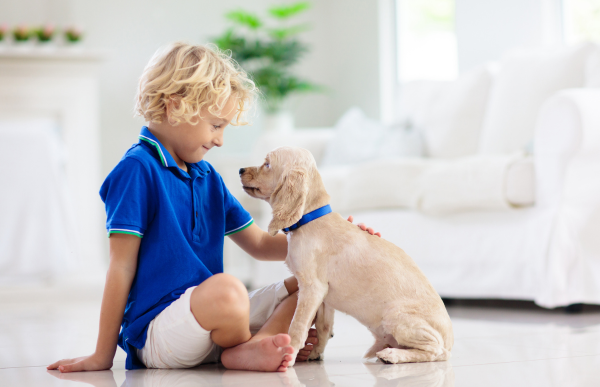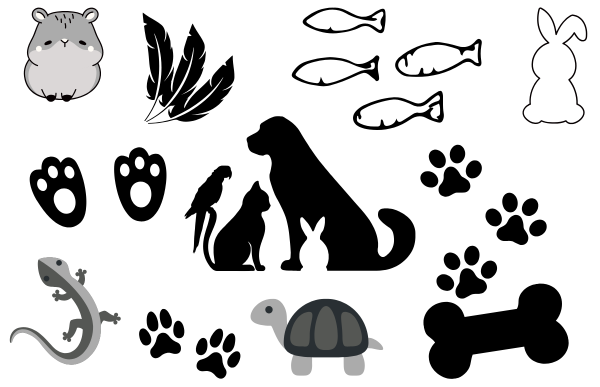
Bringing a pet into the family is a significant decision that requires careful planning and commitment. Pets offer companionship, emotional support, and opportunities for learning responsibility, especially for children. However, integrating a pet into family life goes beyond providing food and shelter—it involves training, socialization, and fostering a culture of care within the household.
This article delves deep into how families can successfully integrate pets, how pet ownership teaches responsibility, and how pets contribute to stronger family bonds.
I. Choosing the Right Pet for Your Family
Before adopting a pet, families should assess their lifestyle, needs, and ability to provide care. A mismatched pet can lead to stress for both the pet and the family, so making an informed decision is crucial.
A. Lifestyle Compatibility
Not every pet suits every family. Considerations include:
- Activity Level: High-energy dogs (e.g., Border Collies, Labradors) need regular exercise, while cats or fish require less activity.
- Living Space: Apartments may be better suited for small animals (cats, rabbits, fish), while large dogs thrive in homes with backyards.
- Family Routine: Households with long work hours may find it difficult to care for pets that need frequent attention.
B. Time Commitment
Owning a pet requires daily responsibilities:
- Feeding & Grooming: Different pets have varying feeding schedules. Long-haired pets require frequent brushing to avoid matting.
- Training & Socialization: Dogs need obedience training, while exotic pets (like reptiles) require specialized care.
- Healthcare Needs: Regular vet checkups, vaccinations, and emergency care must be planned for.
C. Matching Pets to Children’s Ages
| Age Group | Ideal Pets | Why? |
| 0-5 years | Fish, guinea pigs | Low-maintenance and safe to observe |
| 6-10 years | Cats, rabbits | Low to moderate maintenance, interactive |
| 11-15 years | Dogs, larger pets | Can take responsibility for walking, feeding, and cleaning |
| 16+ years | Birds, reptiles | Requires patience and specific knowledge |
Choosing a pet that fits the family’s lifestyle ensures a smoother transition and long-term happiness for both the pet and the owners.
II. Preparing Your Home for a Pet

Once the right pet has been chosen, preparing the home is essential to creating a safe and welcoming environment.
A. Creating a Safe and Comfortable Environment
- Pet-proofing the home: Secure loose wires, store toxic household chemicals, and remove choking hazards.
- Designated pet space: A quiet and comfortable space with a bed, food and water bowls, and toys.
B. Establishing Household Rules
- Who does what? Assign specific tasks like feeding, grooming, and cleaning.
- Pet-free zones: If needed, set boundaries (e.g., no pets in bedrooms or the kitchen).
- Behavior expectations: Teach children how to interact with pets (no tail pulling, respecting the pet’s space).
C. Getting the Necessary Supplies
Essentials:
- Food: Pack dry kibble, wet food, or dehydrated meals like Hill’s Science Diet Dry Dog Food or Blue Buffalo Wilderness Cat Food
- Water Bowls: Collapsible or portable water bowls
- Collar & Leash: Reflective or LED collars for nighttime safety (Illumiseen LED Dog Collar).
- ID Tags: Ensure up-to-date tags with name & contact info like GoTags Stainless Steel Pet ID Tags.
Comfort Items:
- Beds: Travel-friendly pet beds like Chuckit! Travel Bed or K&H Pet Products Travel Bed.
- Blankets: Fleece or waterproof blankets (PetFusion Premium Pet Blanket).
- Toys: Durable chew toys, balls, or interactive toys (KONG Extreme Dog Toy, Yeowww! Catnip Toy).
Health & Hygiene Items:
- Brushes: Depending on the coat type, use a FURminator Deshedding Brush or SleekEZ Grooming Tool.
- Nail Clippers: Boshel Dog Nail Clippers or Safari Professional Nail Trimmer for precise trimming.
- Litter Boxes (for Cats): Foldable or disposable litter boxes.
- Poop Bags (for Dogs): Earth Rated Dog Poop Bags (biodegradable & scented options available)
III. Teaching Responsibility Through Pet Ownership

One of the most rewarding aspects of pet ownership is how it teaches responsibility, especially to children.
A. Assigning Age-Appropriate Pet Care Tasks
| Age Group | Pet Responsibilities |
| 3-5 years | Filling water bowls, assisting in brushing the pet under supervision |
| 6-9 years | Measuring and serving food, playing with pets, picking up toys |
| 10-13 years | Walking dogs, cleaning cages, assisting with vet visits |
| 14+ years | Managing full pet care routine, handling training, vet appointments |
B. Instilling Consistency and Routine
- Scheduled feeding times: Helps children develop responsibility and structure.
- Daily walks: Encourages children to be active and accountable.
- Grooming and hygiene care: Reinforces the importance of personal and pet hygiene.
C. Developing Empathy and Compassion
- Recognizing emotions: Pets show love, excitement, and fear. Teaching children to read pet behavior fosters emotional intelligence.
- Handling with care: Explaining why rough play or loud noises may scare a pet helps children understand boundaries.
- Understanding long-term commitment: Teaching children that pets are lifelong companions, not temporary toys.
D. Teaching Consequences of Neglect
- Forgetting to feed the pet: Discuss how hunger affects animals.
- Not taking the dog for a walk: Show how excess energy leads to destructive behavior.
- Not cleaning the pet’s living space: Explain how poor hygiene can lead to illness.
These experiences prepare children for greater responsibilities in adulthood.
IV. Strengthening Family Bonds Through Pet Ownership

Pets do more than teach responsibility—they also bring families closer together.
A. Encouraging Shared Responsibilities
- Families learn teamwork by dividing pet-care duties.
- Siblings can bond over training and playing with the pet.
B. Creating Meaningful Family Activities
- Walking together: Encourages exercise and outdoor bonding.
- Training and learning new tricks: Reinforces positive reinforcement skills.
- Pet-friendly vacations: Strengthens the idea that pets are part of the family.
C. Providing Emotional Support
- Comfort during tough times: Pets offer unconditional love.
- Companionship: Reduces feelings of loneliness, especially for children.
V. Overcoming Challenges of Pet Ownership
Despite its joys, pet ownership presents challenges. Here’s how families can handle common issues.
A. Handling Behavioral Issues
- Chewing and scratching: Provide chew toys and scratching posts.
- Separation anxiety: Train pets to be comfortable alone for short periods.
- Excessive barking: Ensure adequate exercise and mental stimulation.
B. Managing Pet Allergies
- Regular grooming and vacuuming reduce allergens.
- Hypoallergenic breeds (e.g., Poodles, Bengal cats) can be alternatives.
C. Coping with Pet Loss
- Be honest with children about the cycle of life.
- Encourage expressing feelings and remembering the pet through art, stories, or keepsakes.

Integrating a pet into family life is a rewarding journey that fosters responsibility, empathy, and lifelong companionship. By selecting the right pet, preparing the home, and involving every family member in caregiving, pets can become cherished members of the household. More than just companions, pets offer valuable life lessons. Through consistent care, training, and patience, families can ensure a happy and enriching experience for both humans and their furry, feathered, or scaly friends.
